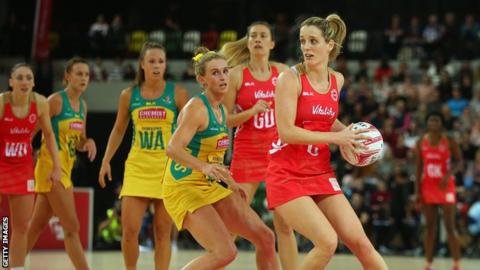
The number of women getting top jobs at UK sporting bodies is down by 6% since 2014, says a new study which calls the findings “extremely concerning”.
The Women in Sport survey also found just under half of Britain’s 68 sporting bodies have failed to meet new government guidelines.
By 1 April, organisations must have a minimum of 30% women on their board, or risk losing funding.
Nine of the 68 organisations have no women in senior leadership roles.
The British Taekwondo Council, the sport’s national governing body, has no woman in any leadership or board positions.
Overall the number of women on the boards of governing bodies is 30% on average.
Key findings – the bad
- Of the 68 governing bodies, just under half (33) do not currently meet the 30% target in terms of women on the board
- For 2016 these included British Cycling, Rugby Football League, England and Wales Cricket Board, Rugby Football Union and the Football Association
- There has been a decrease in the number of women in senior leadership roles – the most senior paid roles, excluding the chief executive officer
- Nine organisations had no female senior leaders
- 18% of chairs are female and 23% of chief executive officers are women
The good
- England Netball’s board is 90% women, 60% of its senior leadership positions are filled by women and of all its leadership positions, 80% are female
The report concluded: “Women in Sport is also extremely concerned by the decrease in the number of women in senior leadership roles. While organisations should continue to tackle the diversity of their boards, they also need to broaden their focus, addressing diversity within their organisations more generally.”
Speaking to BBC Sport, Ruth Holdaway, Women in Sport chief executive said: “There is positivity in the fact that in the seven years we have been doing this audit, we have seen an increase in the number of women at every level of leadership in sport.
“But now we are seeing the figures plateau and for non-executive directors on boards, the figure has sat at around 30% for the last couple of years.
“That is an average across all of the governing bodies, that masks a disparity, some do better than that and some do worse than that. Half of the national bodies are hitting the 30% target, the other half have work to do.”
The figures in the study are for 2016 and just 7% of the Football Association’s non-executive directors are women – the third lowest in the study.
However, the FA has since proposed reforms to appoint more women to its board.
British Cycling, which in the study has 17% of females as non-executive directors, appointed Julie Harrington as its new chief executive on Monday.
Holdaway said gender diversity is being held back by life president and honorary roles for men.
“The time is coming for those who are blocking progress to move, ” she said.
Director of sport at funding body Sport England, Phil Smith, said organisations have to draw up an action plan of how they will reach the 30% target by 1 April, or face losing their funding.
“They have enough time to write an action plan, ” Smith told the BBC. “Public investment in any sports organisations is dependent on organisations reach the standards of the code, anyone who is not able to reach them or have adequate plans to do so, won’t be able to attract public investment.”
England Hockey currently fail to meet the target, as three of their 12 members (25%) are women.
But chief executive Sally Munday said she was confident they would be able to eventually meet the guidelines.
“We will look at how we can evolve to meet the guidelines,” Munday told BBC Sport.
“We will not get to 1 April and ask a board member to leave. We have an outstanding board, it just so happens than more are men than women. Over time, as board members leave, we will look at recruiting people who still meet the skill set, but will enable us to meet the recommendations in the guidelines.”



